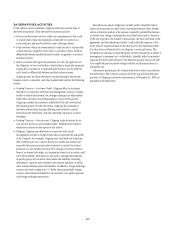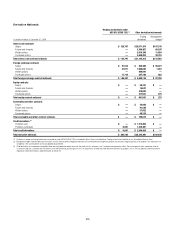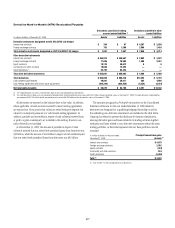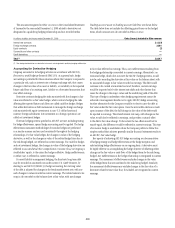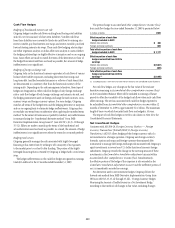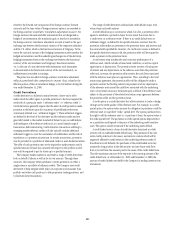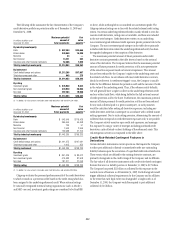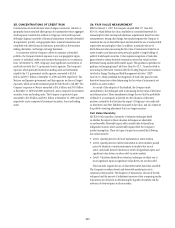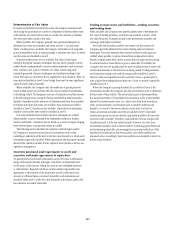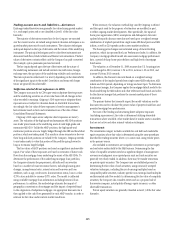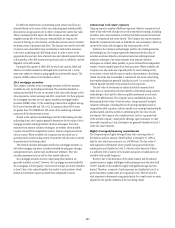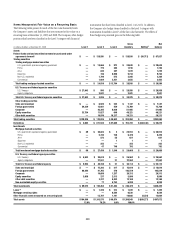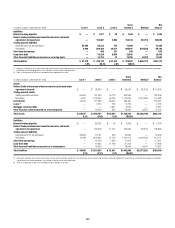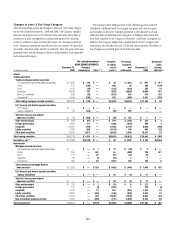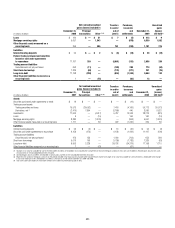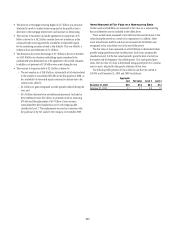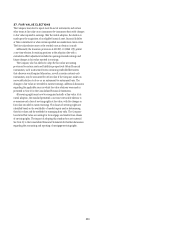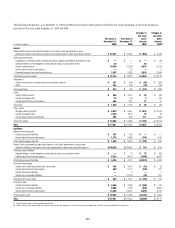Citibank 2009 Annual Report Download - page 235
Download and view the complete annual report
Please find page 235 of the 2009 Citibank annual report below. You can navigate through the pages in the report by either clicking on the pages listed below, or by using the keyword search tool below to find specific information within the annual report.225
Trading account assets and liabilities—derivatives
Exchange-traded derivatives are generally fair valued using quoted market
(i.e., exchange) prices and so are classified as Level 1 of the fair value
hierarchy.
The majority of derivatives entered into by the Company are executed
over the counter and so are valued using internal valuation techniques as no
quoted market prices exist for such instruments. The valuation techniques
and inputs depend on the type of derivative and the nature of the underlying
instrument. The principal techniques used to value these instruments are
discounted cash flows, Black-Scholes and Monte Carlo simulation. The fair
values of derivative contracts reflect cash the Company has paid or received
(for example, option premiums paid and received).
The key inputs depend upon the type of derivative and the nature of
the underlying instrument and include interest rate yield curves, foreign-
exchange rates, the spot price of the underlying volatility and correlation.
The item is placed in either Level 2 or Level 3 depending on the observability
of the significant inputs to the model. Correlation and items with longer
tenors are generally less observable.
Subprime-related direct exposures in CDOs
The Company accounts for its CDO super-senior subprime direct exposures
and the underlying securities on a fair-value basis with all changes in fair
value recorded in earnings. Citigroup’s CDO super-senior subprime direct
exposures are not subject to valuation based on observable transactions.
Accordingly, the fair value of these exposures is based on management’s
best estimates based on facts and circumstances as of the date of these
Consolidated Financial Statements.
Citigroup’s CDO super-senior subprime direct exposures are Level 3
assets. The valuation of the high-grade and mezzanine ABS CDO positions
uses trader prices based on the underlying assets of each high-grade and
mezzanine ABS CDO. Unlike the ABCP positions, the high-grade and
mezzanine positions are now largely hedged through the ABX and bond short
positions, which are trader priced. This results in closer symmetry in the way
these long and short positions are valued by the Company. Citigroup intends
to use trader marks to value this portion of the portfolio going forward so
long as it remains largely hedged.
The fair values of ABCP positions are based on significant unobservable
inputs. Fair value of these exposures are based on estimates of future cash
flows from the mortgage loans underlying the assets of the ABS CDOs. To
determine the performance of the underlying mortgage loan portfolios,
the Company estimates the prepayments, defaults and loss severities
based on a number of macroeconomic factors, including housing price
changes, unemployment rates, interest rates and borrower and loan
attributes, such as age, credit scores, documentation status, loan-to-value
(LTV) ratios and debt-to-income (DTI) ratios. The model is calibrated
using available mortgage loan information including historical loan
performance. In addition, the methodology estimates the impact of
geographic concentration of mortgages and the impact of reported fraud
in the origination of subprime mortgages. An appropriate discount rate is
then applied to the cash flows generated for each ABCP tranche, in order to
estimate its fair value under current market conditions.
When necessary, the valuation methodology used by Citigroup is refined
and the inputs used for the purposes of estimation are modified, in part,
to reflect ongoing market developments. More specifically, the inputs of
home price appreciation (HPA) assumptions and delinquency data were
updated along with discount rates that are based upon a weighted average
combination of implied spreads from single name ABS bond prices and ABX
indices, as well as CLO spreads under current market conditions.
The housing-price changes were estimated using a forward-looking
projection, which incorporated the Loan Performance Index. In addition, the
Company’s mortgage default model also uses recent mortgage performance
data, a period of sharp home price declines and high levels of mortgage
foreclosures.
The valuation as of December 31, 2009 assumes that U.S. housing prices
are unchanged in 2010, increase 1.1% in 2011, increase 1.4% in 2012, and
increase 3% from 2013 onwards.
In addition, the discount rates were based on a weighted average
combination of the implied spreads from single name ABS bond prices, ABX
indices and CLO spreads, depending on vintage and asset types. To determine
the discount margin, the Company applies the mortgage default model to the
bonds underlying the ABX indices and other referenced cash bonds and solves
for the discount margin that produces the current market prices of those
instruments.
The primary drivers that currently impact the model valuations are the
discount rates used to calculate the present value of projected cash flows and
projected mortgage loan performance.
For most of the lending and structuring direct subprime exposures
(excluding super seniors), fair value is determined utilizing observable
transactions where available, other market data for similar assets in markets
that are not active and other internal valuation techniques.
Investments
The investments category includes available-for-sale debt and marketable
equity securities, whose fair value is determined using the same procedures
described for trading securities above or, in some cases, using vendor prices
as the primary source.
Also included in investments are nonpublic investments in private equity
and real estate entities held by the S&B business. Determining the fair
value of nonpublic securities involves a significant degree of management
resources and judgment as no quoted prices exist and such securities are
generally very thinly traded. In addition, there may be transfer restrictions
on private equity securities. The Company uses an established process for
determining the fair value of such securities, using commonly accepted
valuation techniques, including the use of earnings multiples based on
comparable public securities, industry-specific non-earnings-based multiples
and discounted cash flow models. In determining the fair value of nonpublic
securities, the Company also considers events such as a proposed sale of
the investee company, initial public offerings, equity issuances, or other
observable transactions.
Private equity securities are generally classified as Level 3 of the fair value
hierarchy.


